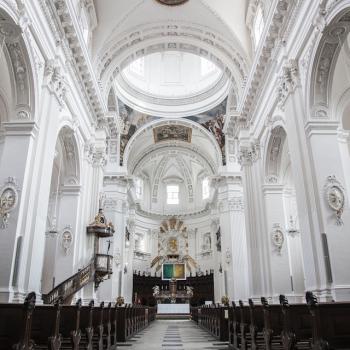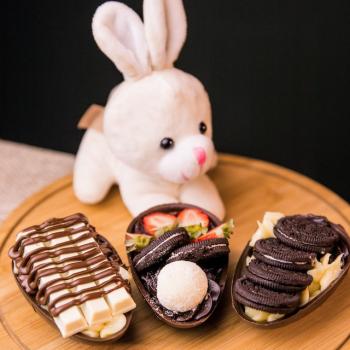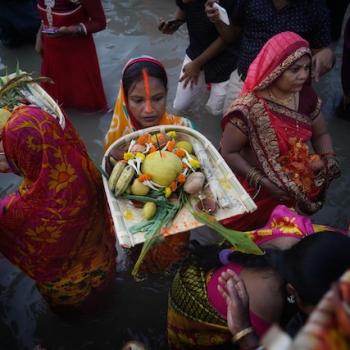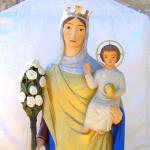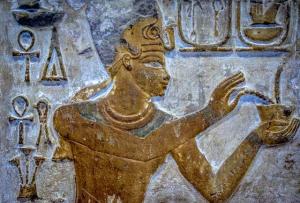
Image via Tom Podmore / Unsplash
Zoolatry has roots in several cultures, but perhaps the most well-known is ancient Egypt. Ancient Egyptian animals and their meanings have continued to be prevalent today, even if zoolatry is less common than ever. The reverence of animals has persisted, and nowadays, humans understand animals better than they did in the past. Here’s how zoolatry and ancient Egyptian gods and goddesses may have affected the way people perceived animals back then and today.
Summary Statement: Zoolatry in ancient Egypt might have affected how people feel about certain animals, and studying the meanings of those animals might show what traits the ancient Egyptian religion prioritized.
What Does Zoolatry Mean?
Zoolatry is defined as the worship of animals, but the word wasn’t coined until 1817, meaning that civilizations may not have had a singular term for their beliefs. You might think of several old religions and cultures that worshiped animals, but people still revere animals to this day. While reverence is not the same as worship, people still treat some animals well, like pets, because of what they provide and symbolize, while they dislike others, like snakes and spiders, for similar reasons.
Zoolatry may have started because animals and deities are closely related. In Ancient Egypt, gods and goddesses were often depicted with animal likenesses. Some resembled one animal, while others had traits of many. Ancient Egyptian animals might be some of the first things you think of when you imagine zoolatry, particularly the belief that they worshiped cats. In fact, a lot of artifacts from ancient Egypt feature the likeness of cats in all sizes, proving that they were important.
Some people may confuse worshiping animals with the reverence for them. Humans should feel responsible for caring for the earth and all its inhabitants rather than feeling like they’re much more important and instead depleting the land. Some locations understand why animals are important to their ecosystems, while others celebrate them as an essential part of their religion. Kukur Tihar, which is a ceremony on the second day of a Hindu festival, honors dogs and similar animals, frowning upon their mistreatment.
Due to zoolatry and animal reverence in general, many animals’ lives are spared when they would have been taken for various reasons otherwise. For example, the cruelty-free makeup movement advocates for companies to stop testing cosmetics on animals and to buy more responsibly. These practices take the intense fear out of certain animals, like snakes, and add more respect to animals that deserve it, like livestock. By revering animals, people have saved them from fates that could have been painful or mistreatment.
What Ancient Egyptian Animals Were Worshiped?
In Ancient Egypt, people did not necessarily worship animals. It’s more that certain animals represented their deities, like how an owl was often attributed to Athena in Ancient Greece. You may have seen depictions of the gods and goddesses with animal heads. These depictions often led to certain animals being revered, as how cats are connected to the goddess Bastet.
The Nile River may be the greatest explanation for which animals became revered in ancient Egyptian culture. The god Sobek is depicted with a crocodile’s head, perhaps because the strong crocodiles lived in and around the mighty river. It would make sense for the ancient Egyptians to revere nearby animals that represented a fitting trait for a certain god.
Even today, some animals have a good or bad reputation depending on the “traits” humans have assigned to them. For example, people might consider all foxes tricky or assert that sharks are menacing. People feel a level of distrust of jackals, and that can be traced back to them being seen as predators that will impact the populations of other animals. Anubis, the god of the underworld, is represented by a jackal, which might have fed into the distrust people feel nowadays toward the animal, as most people either fear or dislike the concept of death.
Ancient Egyptian Animals and Their Meanings
Certain ancient Egyptian animals are thought of more commonly than others. This list is by no means comprehensive, but it can help you understand more about the animals you often see as part of ancient Egypt, as well as what they could indicate of zoolatry.
Cat: When people think of ancient Egyptian animals and their meanings, they often consider cats an important part. Egyptians believed that cats would bring luck to the homes they lived in, so they were often treated like royalty and mummified after death. These animals were so special that anyone who killed a cat was sentenced to death.
Cow: Cows were often connected to female fertility. They have provided meat and milk to people throughout history, and many deities have been portrayed as cows and bulls throughout history. These animals are incredibly important and, in some ways, represent the sustainability of life itself.
Crocodile: Ancient Egyptians might have worshiped crocodiles as a way to avoid their anger. This animal was thought of as a god of water, and crocodiles can be dangerous if you don’t know how to avoid them and give them space. They’re powerful creatures, which is likely why Sobek is often depicted as a crocodile or with the head of one.
Dog: Dogs and other canines, like jackals, were typically thought of as funerary deities. Interestingly, dogs were considered afterlife deities, while cats brought good fortune. Still, dogs also portray loyalty, which might have helped them escape the negative connotation that jackals have nowadays.
Falcon: Ancient Egyptians thought highly of the falcon. They saw it as a protector of the Pharaoh, as well as a manifestation of certain deities. Horus and Ra are both represented by birds, though Horus was lord over the sky, sun and moon, while Ra was a sun god most associated with noontime.
Horse: Contrary to what you may think, horses were never used for labor in ancient Egypt and were instead a sign of royalty and power. Because horseback riding encourages proper posture by developing back and abdominal muscles, royalty may have been seen carrying themselves well. Resheph was a deity known as a protective healer and was most commonly associated with horses and gazelles.
Scarab: The scarab was an important animal in ancient Egypt, as it symbolized the cyclical nature of life. The idea that human beings could experience birth, life, death and rebirth was similar to the ball of dung the beetle pushes along. The Egyptian god Khepri is the god of the morning sun, which could be symbolic of the beginning of life, and is represented by a scarab.
Vulture: To ancient Egyptians, the vulture symbolized Upper Egypt while also signifying protection. Pharaohs wore a symbol of the vulture on their foreheads, believing that it would offer them protection. The vulture is also associated with Nekhbet, who was a protector of royal children and expectant mothers.
How Ancient Egyptian Animals Affected Society
Animals and human beings have an inherent connection because of how they interact with one another in the world. Some animals are kept as pets, while others are eaten and used with respect. Ancient Egyptian animals are just some of the ones that are still held in high esteem to this day, and it’s easy to see why: All animals offer something different.
Not every religion worships animals, but many people, both religious and not, revere them and their contributions to the planet. Zoolatry may not be widely practiced today, but many of the beliefs people carried about animals then are still deeply rooted in society today.




